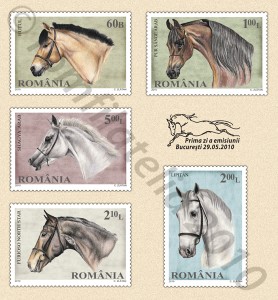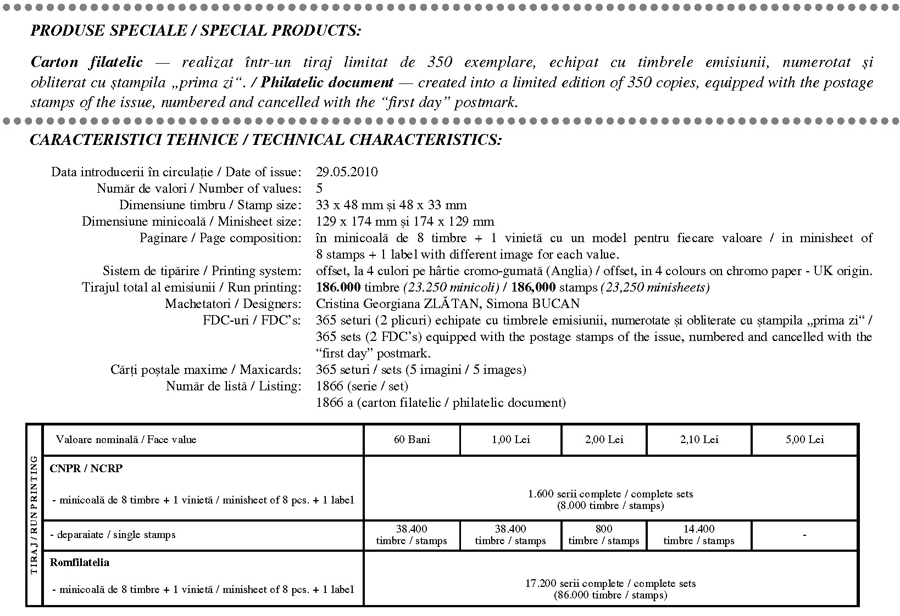 Imposing and gallant, sometimes kind and docile, some other times harsh and balking, the horse became since long time ago a constant and a loyal human’s friend.Imposing and gallant, sometimes kind and docile, some other times harsh and balking, the horse became since long time ago a constant and a loyal human’s friend.
Imposing and gallant, sometimes kind and docile, some other times harsh and balking, the horse became since long time ago a constant and a loyal human’s friend.Imposing and gallant, sometimes kind and docile, some other times harsh and balking, the horse became since long time ago a constant and a loyal human’s friend.
About ten thousand years ago, man discovered the utility ofthe horse. It is not known when the humans domesticated the horse or what society used horses for riding. However, from that moment on, when the horse became the human’s friend, mankind has progressed with a speed proved and recognized by the history.
Wishing to meet the stamp collectors’ and horse lovers’ wishes, Romfilatelia introduces into circulation the postage stamps issue “Horse Breeds”.
On the postage stamp with the face value of RON 0.60 is illustrated the Hutsul horse.
This horse breed is spread over the Carpathian Mountains range on the present-day territories of Poland, Slovakia, Ukraine and Romania. The first stud breeding Hutsul horses in Romania was established in 1856 at Radauti.
It is a lively and energetic horse that sizes 139-141 cm and weights 400-425 kg.
The Hutsul is resisting to diseases, intelligent and strong, being usually used for traction and riding.
Today, it is bred in Romania at Lucina Stud (Suceava).
On the postage stamp with the face value of RON 1.00 is illustrated the Arabian Thoroughbred horse.
The Arabian Thoroughbred breed is the oldest and most famous breed of horses in the world. Its origin seems to be the Central Asian area, reaching the Arabian Peninsula through the Persians.
The Arabian Thoroughbred horse has a size of 145-152 cm and a weight of 400-450 kg. It is a familiar, docile and courageous horse, with a very brisk temperament.
It is very good at dressage and also at obstacle challenges. Regarding the endurance challenges, the Arabian Thoroughbreds horse have no rival. The intelligence of the Arabian horses is already proverbial.
Today, the Arabian Thoroughbred horses are bred in Romania at Mangalia Stud.
The postage stamp with the face value of RON 2.00 illustrates the Lipizzan horse.
The ancestors of the Lipizzan horses have been certified ever since A.D. 800. They were brought by the Moors from North Africa to Spain. In 1580, the Austrian Imperial Court wanted to have the best horses ever; therefore, in Lipizza, close to Trieste, a stud was established where the Lipizzan breed appeared.
The Lipizzan size is 155-160 cm and their weight is about 500-525 kg.
Tempered and with a lot of personality, they are kind, docile and intelligent. They have innate skills for high-class dressage.
The Lipizzan is an elegant, beautiful and robust horse which has always been appreciated as an exceptional parade horse for the European kings.
In our country, the Lipizzan is bred at Sambata de Jos (Brasov County) and Beclean (Bistrita Nasaud County) Studs.
On the postage stamp with the face value of RON 2.10 is illustrated the Furioso North Star horse.
It is a Hungarian origin horse known in the 19th century, around the year 1870, following successive crossbreedings between English and Arabian Thoroughbred horses.
Its size is 164-166 cm and the weight may reach 500 to 550 kg.
A sturdy horse, the Furioso North Star has a brisk temperament and has proved to be a trustworthy partner of human both for work and for sports. It takes part in the riding and dressage competitions, but is also used for Police work and for light traction.
Today, the purebred Furioso North Star is bred at Slatina Stud (Olt County).
On the postage stamp with the face value of RON 5.00 is illustrated the Shagya Arabian horse.
The place of birth of this breed were the studs in Babolna (Hungary) and Radauti (Romania), at the beginning of the 17th century.
Its size is 148-157 cm and the weight is 480-530 kg.
It is docile and has a brisk temperament, can be used for traction, pleasure equitation, dressage and horse obstacle challenges.
Today the Shagya Arabian is bred in our country at Radauti Stud (Suceava County).
We warmly thank to the National Forest Authority – Romsilva, Direction of Horse Breeding, Exploitation and Amelioration and to the National Horseracing Authority, for their support in accomplishing this postage stamps issue.
Issue date: 2010-05-29









